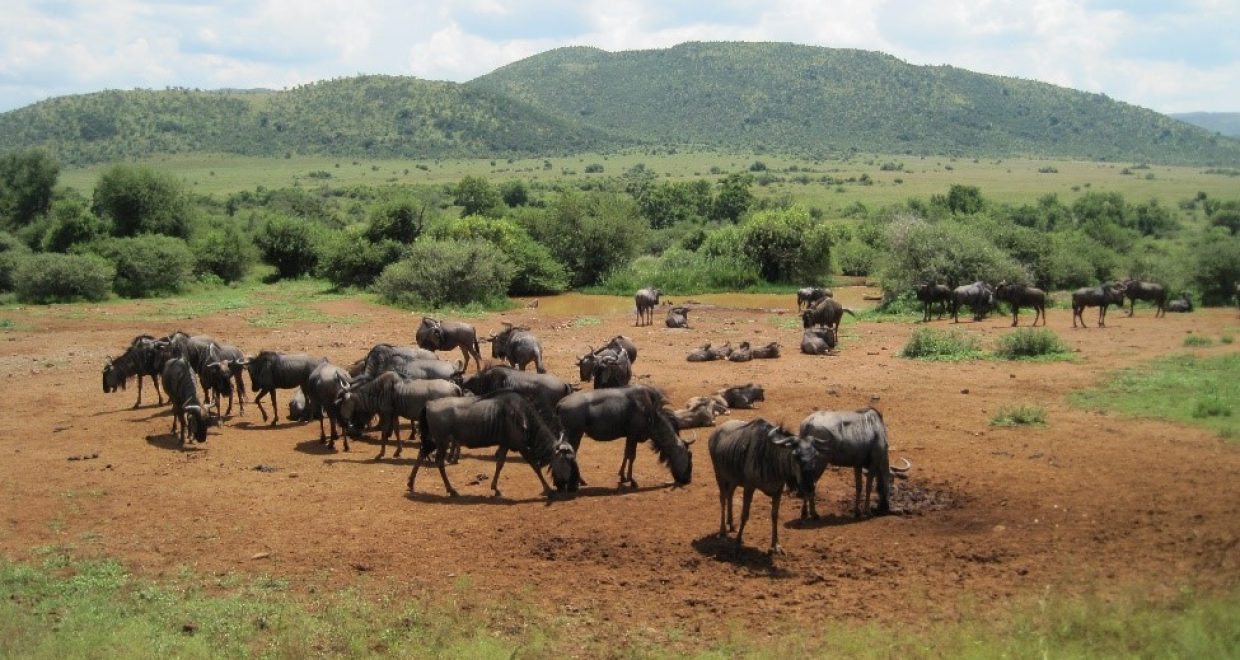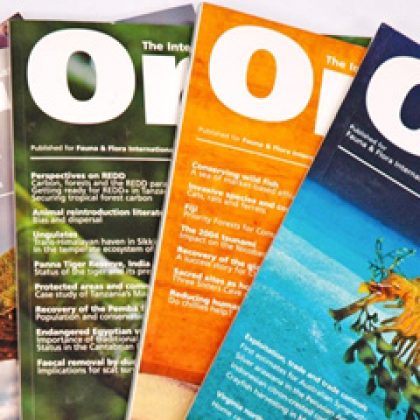Parasitic fauna of African large mammals
The latest Paper of the Month for Parasitology is “Some gastrointestinal nematodes and ixodid ticks shared by several wildlife species in the Kruger National Park, South Africa“
With conservation of African mammalian species in mind, wildlife reserves and managed game parks continue to offer some protection to many species and associated natural habitats. These species, and populations thereof, range from the wildebeest, with substantive roving herds of some 1.5 million animals, to others placed at very-high-risk of extinction. Among the distressing list of the latter, the black rhino, having a fragmented continental stock of less than 5,000 extant individuals, is one of the most threatened. Even today, the black rhino sadly remains vulnerable to clandestine poaching operations. As might be expected, less well-known and typically understudied are the parasites (both endo- and ecto-parasite faunae) of each of these species. However, parasitism is an integral dimension in any responsible animal management programme.
In South Africa, The Kruger National Park (KNP) is one of the largest managed reserves. Its formal origins trace back to the 1920s. For those who care to look, an even older but fragmented history begins when Paul Kruger, then President of the South African Republic, decreed a “Government Wildlife Park” in 1898. The KNP currently covers an area of 19,485 km2, being about 360 km long, with an average width of 65 km. Internationally, it provides significant revenue from tourism, which may at times conflict with current conservation objectives or ancestral land claims. Like other parks, KNP was temporarily closed due to the COVID-19 pandemic but reopened on 8th June 2020, though numbers visiting the park are still much reduced.
Despite best efforts in herd management, stocks of the blue wildebeest are in decline, as first noticed in the 1970s. This prompted the Veterinary Division of the National Parks Board, to undertake a parasitological survey where some 16 species of parasitic nematode and 8 species of ixodid tick were found, with some species cross-infecting various ungulates (e.g., impalas, greater kudus, zebras) within the park. These surveys form the backbone dataset for subsequent comparisons that made a more comprehensive assessment as reported by Ivan G. Horak and his colleagues from the Onderstepoort Veterinary Institute, University of Pretoria, over a more recent 2-year period of investigation. Key associations included the presence of certain gastrointestinal nematode species (Trichostrongylus deflexus) infecting over 50% of at least one of the five host species studied, and was common to all species within the small intestine. Alternatively, other gastrointestinal nematode species were more tightly bound to host species (Haemonchus krugeri with impala alone). The parasitic fauna no doubt has adapted to the peculiar feeding and defecation habits of each host species, not forgetting warthogs and scrub hares which could also be sometimes patently infected.
Since 1920, the research activities by the wildlife parasitologists in South Africa have played a key role in the conservation of biodiversity and have supported the safe, ethical and sustainable utilization of wildlife. Many of their findings have found their way into the applied control of parasites in wildlife reserves and managed game parks as part of biodiversity conservation and environmental protection. A thorough understanding of the host-parasite associations among several mammal species such as those in the KNP is of importance for tailored parasite control programmes elsewhere. Foremost, any animal restocking programmes, where translocations of individuals or herds are needed, should not be oblivious to their parasitic faunae.
Looking to the future, One Health approaches are also noting the emergence of parasites and pathogens at the margins of parks and reserves where humans and livestock are encroaching. Ensuring the health and welfare of wildlife, which in its own right is laudable, in turn brings wider benefits as explained by the World Organization for Animal Health (OIE) Wildlife Working Group “It is the responsibility of all governments to ensure appropriate public and private alliances allowing better animal disease control. Alliances between farmers, official veterinarians and private veterinary practitioners are key”, and the investigation report by Horak et al. is a good example.
The paper “Some gastrointestinal nematodes and ixodid ticks shared by several wildlife species in the Kruger National Park, South Africa“, Ivan G. Horak, Joop Boomker, Kerstin Junker, G. James Gallivan, published in Parasitology, is available free for a month.






